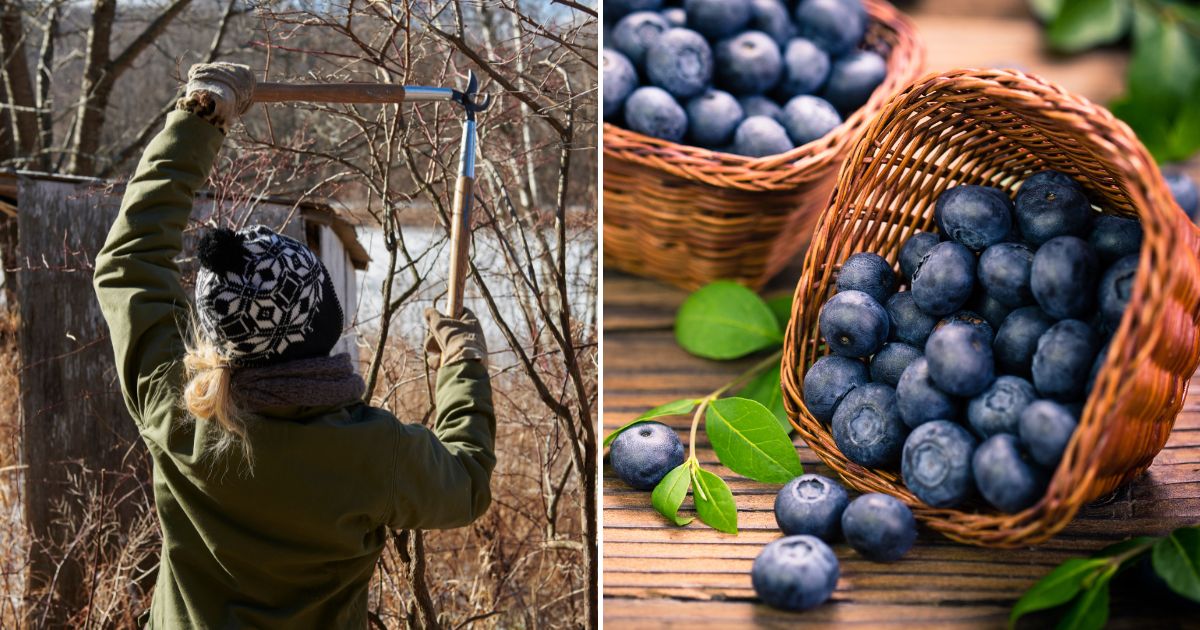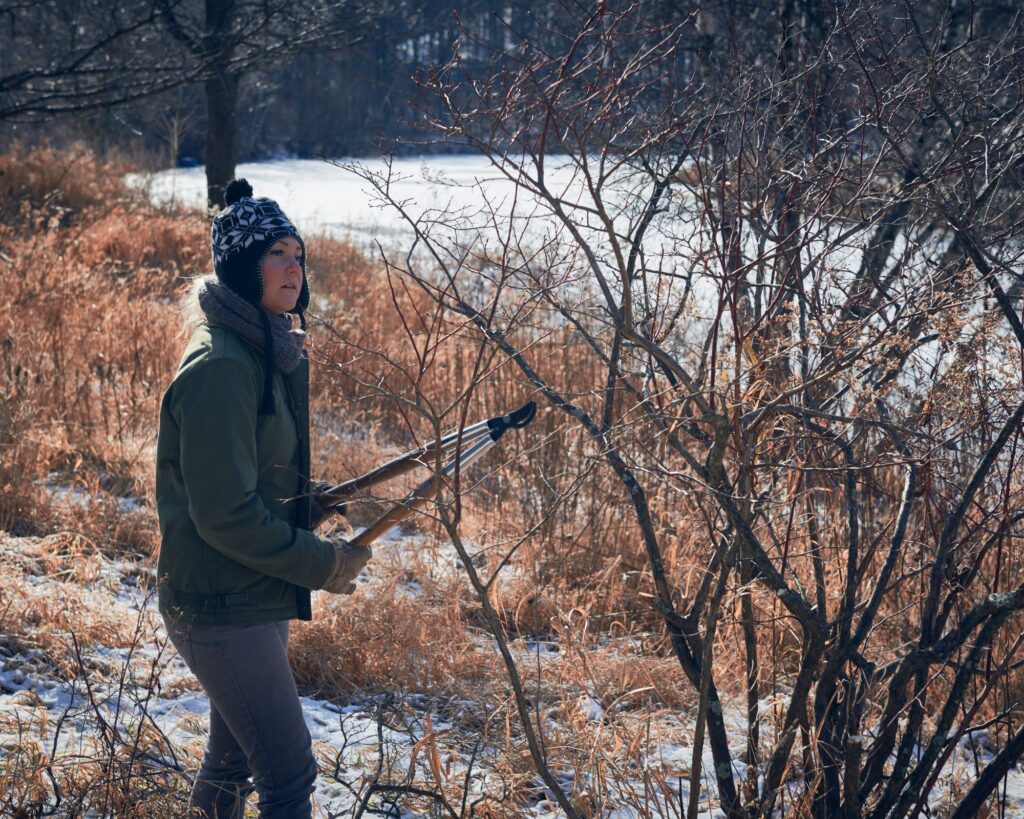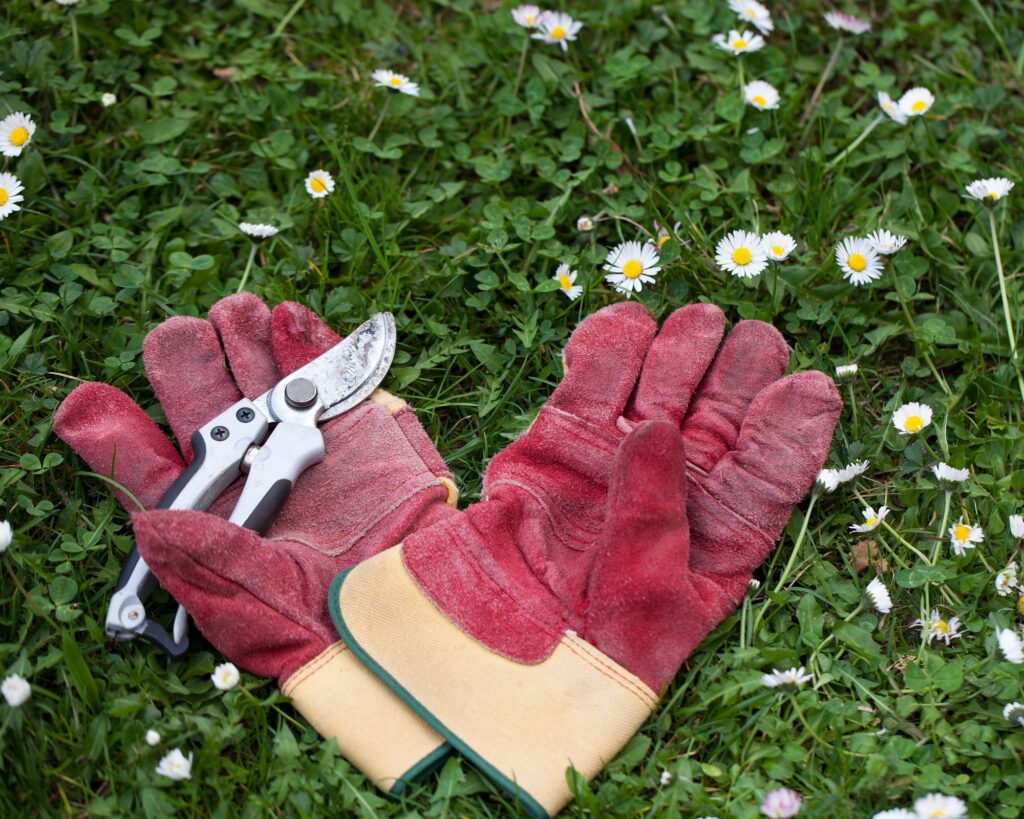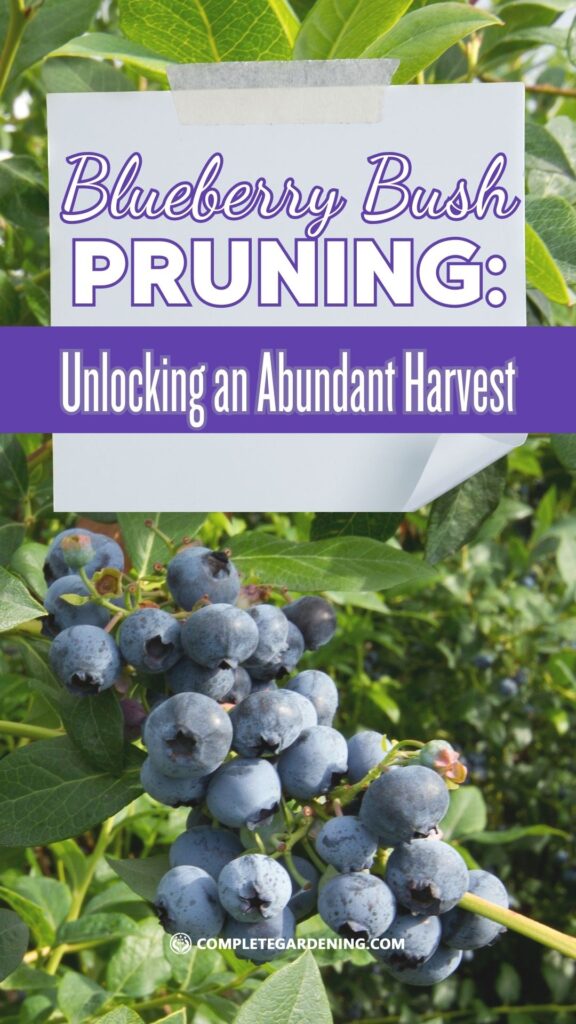Struggling to get your blueberry bushes to produce abundant, juicy berries? The solution is simpler than you think: proper pruning.
Pruning in late winter or early spring is crucial, as it takes advantage of the bushes’ dormant phase, reducing stress and boosting fruit production.
Feeling overwhelmed by the thought of pruning? Don’t worry – it’s easier than it looks with a little guidance.
By removing old, unproductive canes and focusing on the healthiest branches, you’ll stimulate new growth and enhance your berry yield.
Varieties and Their Specific Needs
Blueberry bushes thrive when you understand their varieties and the essential role of dormancy in their pruning. Getting these basics right is key to enjoying a steady supply of bountiful berries every year.
Blueberries come in several varieties, each with its own unique needs. There are three main types: highbush, lowbush, and rabbiteye.
Highbush blueberries are commonly grown in home gardens. They need well-drained, acidic soil and receive regular watering. You’ll find them in northern climates.
Lowbush blueberries are more suited to colder regions and can thrive in less ideal soil conditions. They often grow wild and require less maintenance.
Rabbiteye blueberries prefer warmer climates and can tolerate drier conditions. This variety often grows taller than the others, requiring different pruning techniques.
Proper care tailored to your specific blueberry variety ensures healthy growth and maximum fruit production.
The Role of Dormancy in Blueberry Pruning
Dormancy is a critical factor in pruning blueberry bushes. This period, typically in winter, is when the bushes are not actively growing. Pruning during dormancy minimizes stress on the plant.
Timing: Prune late in the dormant season, just before bud break, to encourage new growth and fruit production.
Technique: Focus on removing dead or diseased wood, and thin out crowded areas to allow light and air to penetrate. This prevents disease and promotes healthier growth.
Dormancy also helps you better see the structure of the bushes, making it easier to make precise cuts. Pruning during dormancy supports vigorous new growth and bigger, juicier berries in the upcoming season.
Seasonal Pruning Guide
Pruning your blueberry bushes at the right time is crucial for promoting healthy growth and maximizing berry production. Knowing when to prune ensures the plants have optimal conditions for developing fruitful branches and avoiding damage.
Late Winter to Early Spring: The best time to prune most blueberry varieties is during their dormant period, typically late winter to early spring. This timing helps stimulate new growth and fruit production as the plant awakens from dormancy.
After Harvest: Light pruning post-harvest can help manage the plant’s shape and size. Focusing on damaged or dead branches during this period helps maintain overall plant health without stimulating new growth that might not mature before frost.
Regular pruning at these times prevents overgrowth and ensures consistent berry production year after year. Be mindful of removing crossing branches and thinning out the middle of the bush to improve air circulation.
Weather Considerations
Avoid Freezing Conditions: Pruning during severe cold can harm the bush. Ensure that the threat of extreme frost has passed before making any cuts. Pruning in milder conditions helps avoid frost damage to tender new growth.
Dry Weather: Ideally, prune during dry weather to reduce the risk of spreading diseases. Wet conditions can promote fungus growth, which could enter cuts and harm the plant.
Moderate Temperatures: Choose days with moderate temperatures. Extremely hot or cold days can stress the plant, making it harder to recover from pruning. Ideal pruning conditions enable the plant to heal efficiently and focus on new growth.
Equipment and Safety
Proper pruning is crucial for a healthy blueberry bush and a rich berry harvest. You need the right tools for the job and should follow a clear, step-by-step method to ensure the best results.
To prune blueberry bushes effectively, gather sharp pruning shears and long-handled loppers. Sharp tools make clean cuts and minimize plant damage.
Wear gardening gloves to protect your hands from thorns and sharp branches. Safety goggles guard your eyes from debris. Sturdy, non-slip footwear provides stability, preventing slips or falls during pruning.
Disinfect your tools before and after use with a solution of one part bleach to nine parts water. This prevents the spread of diseases between plants.
Step-by-Step Pruning Method
Start pruning in late winter or early spring while the bushes are still dormant. Remove dead, damaged, or diseased wood first. This promotes healthier growth and reduces the risk of infection.
Next, eliminate weak or crossing branches. Cut any branches that grow towards the center of the bush to improve air circulation and sunlight penetration.
Prune old canes that are more than six years old, as they produce fewer berries. Leave a mix of younger shoots and mature canes to balance growth and fruit production.
Make each cut just above a bud or branch node. This encourages new, vigorous growth. Prune selectively, aiming to open up the center of the bush and maintain its natural shape without over-pruning.
Post-Pruning Care
Caring for blueberry bushes post-pruning and making regular checks for their health is crucial for maintaining productive and healthy plants.
After you have finished pruning your blueberry bushes, immediate care helps them recover and thrive. First, clean up all the pruned branches and leaves around the bush to prevent any disease or pest infestation.
Water the bushes thoroughly to help them cope with the shock of pruning. Mulch around the base with 2-4 inches of organic material like pine needles or bark to retain moisture and regulate soil temperature.
This helps the roots stay cool and moist, promoting healthy growth.
It’s also beneficial to fertilize your bushes after pruning. Use a balanced fertilizer to provide essential nutrients. Follow the package instructions for the correct amount. Don’t over-fertilize, as this can harm the plant.
Regular fertilization supports the new growth that follows pruning.
Ongoing Bush Health Monitoring
Consistently monitoring the health of your blueberry bushes ensures they stay in optimal condition. Check your bushes every week for signs of pests. Look for chewing damage or discolored leaves.
Common pests include aphids and caterpillars. Early detection allows for prompt treatment.
Monitor the moisture level in the soil. Blueberries need constant moisture but not waterlogged soil. Use a moisture meter to help. If the soil dries out, water the bushes thoroughly at the base.
Finally, watch for signs of diseases like leaf spot or cankers. Remove any affected parts promptly and treat with appropriate fungicides. Regularly inspect branches and leaves, especially during wet seasons, to keep diseases at bay.
Mastering the art of pruning your blueberry bushes is essential for ensuring a bountiful harvest year after year.
By understanding the specific needs of your blueberry variety you can effectively time your pruning to stimulate healthy growth and maximize fruit production.
Proper pruning techniques are key to promoting vigorous new growth and abundant berries.
By following these guidelines, you’ll soon become adept at maintaining your blueberry bushes, reaping the rewards of your efforts with every harvest.









